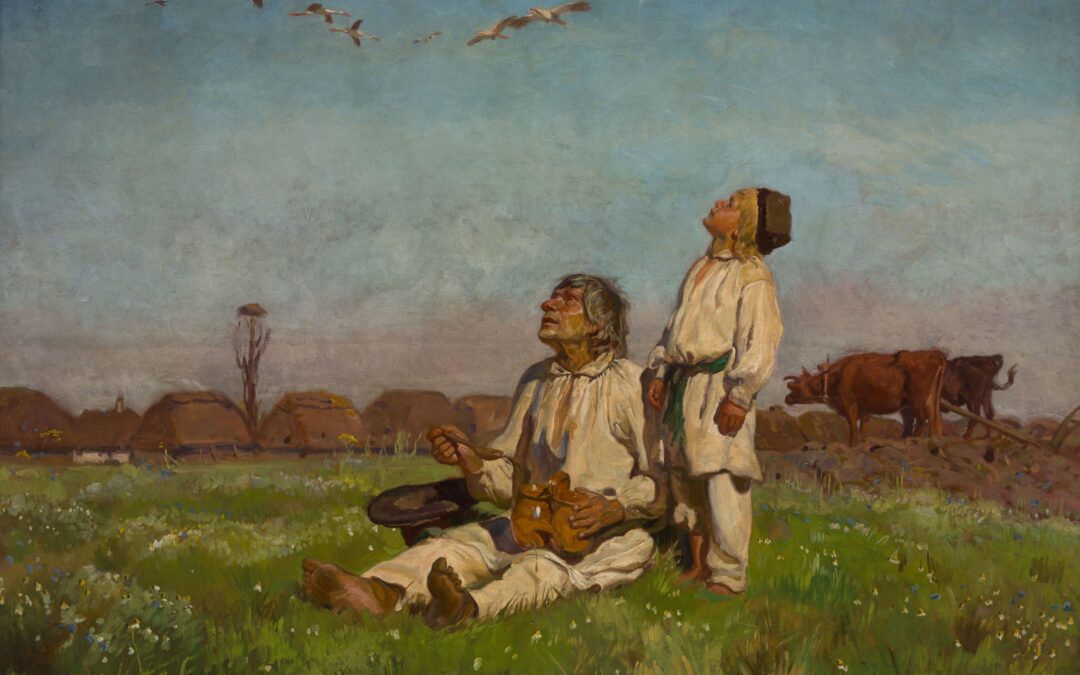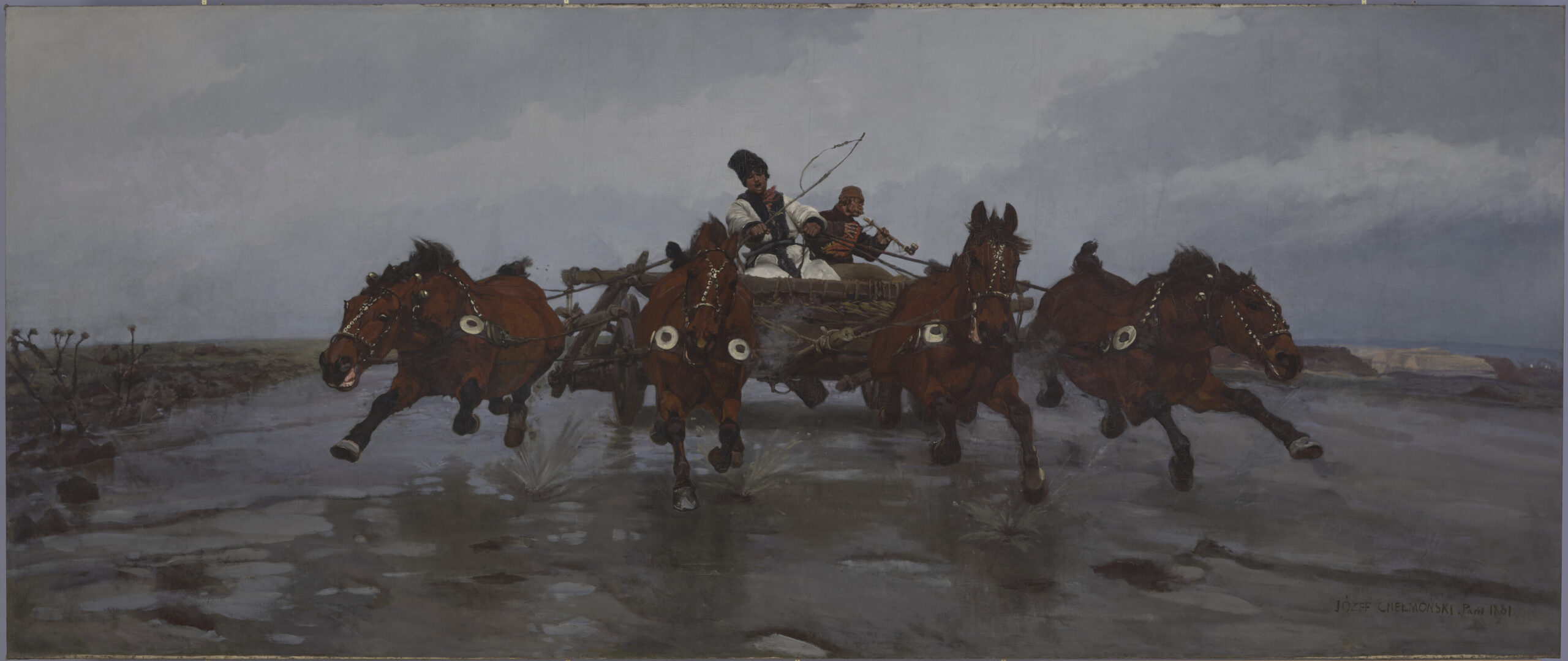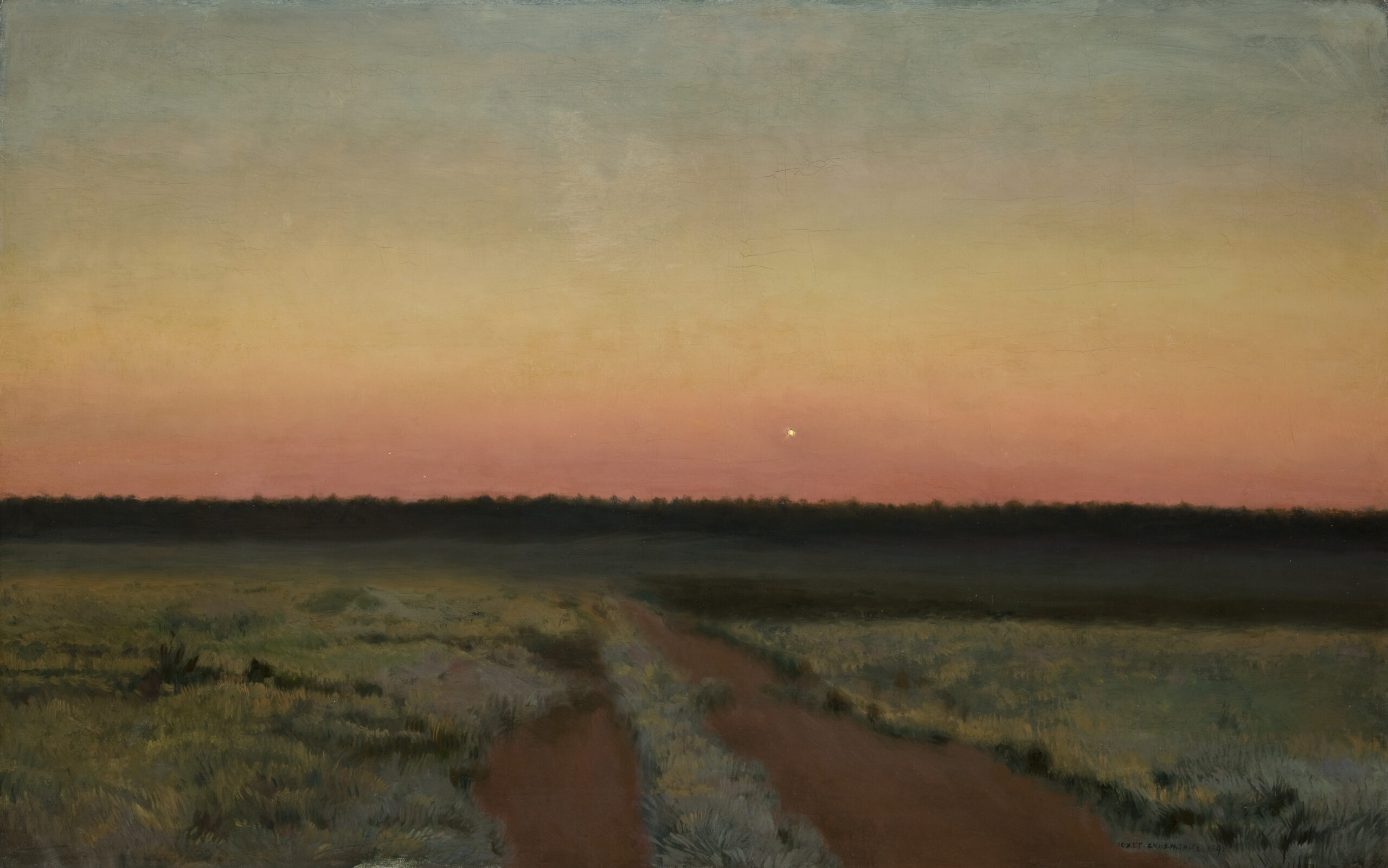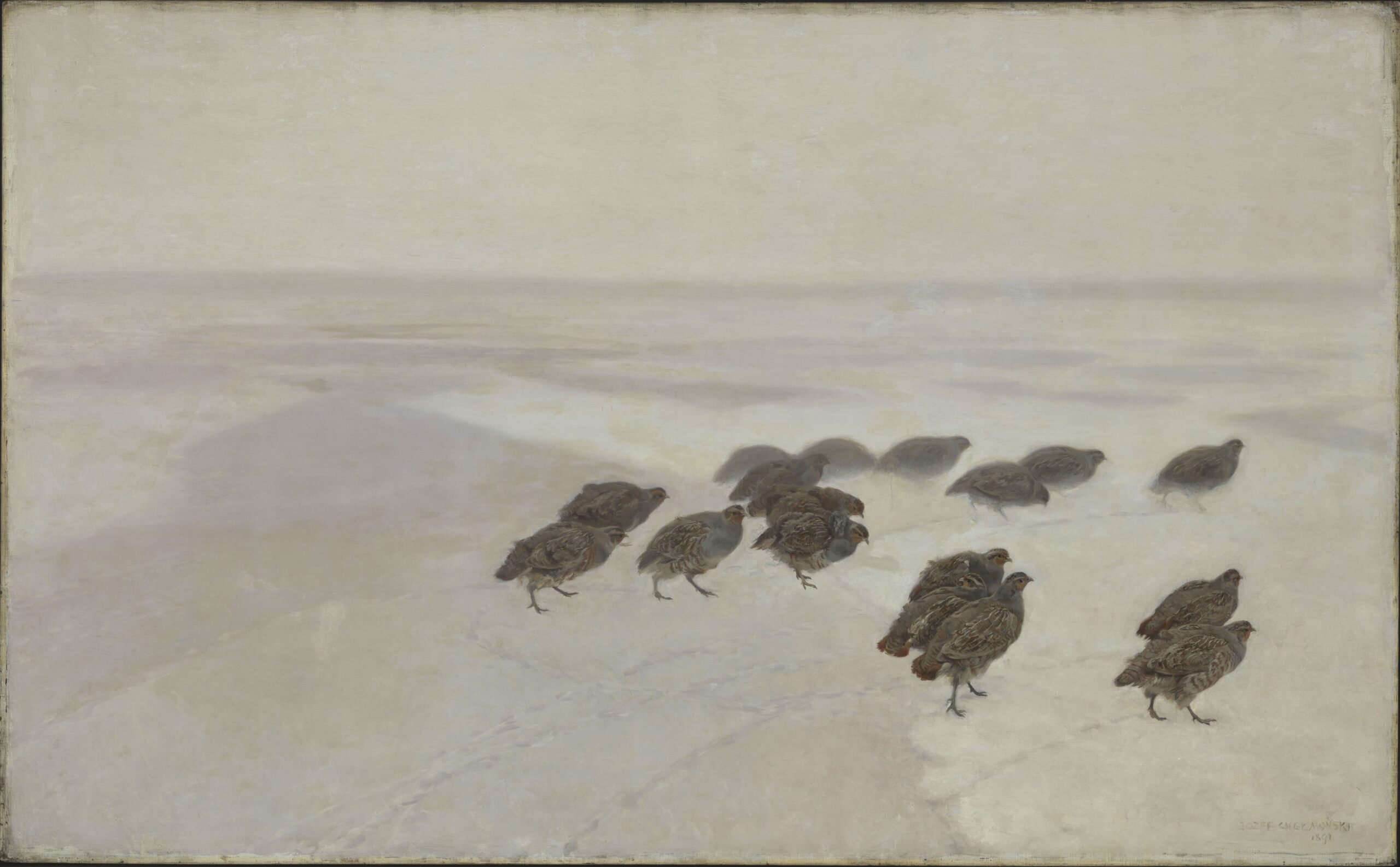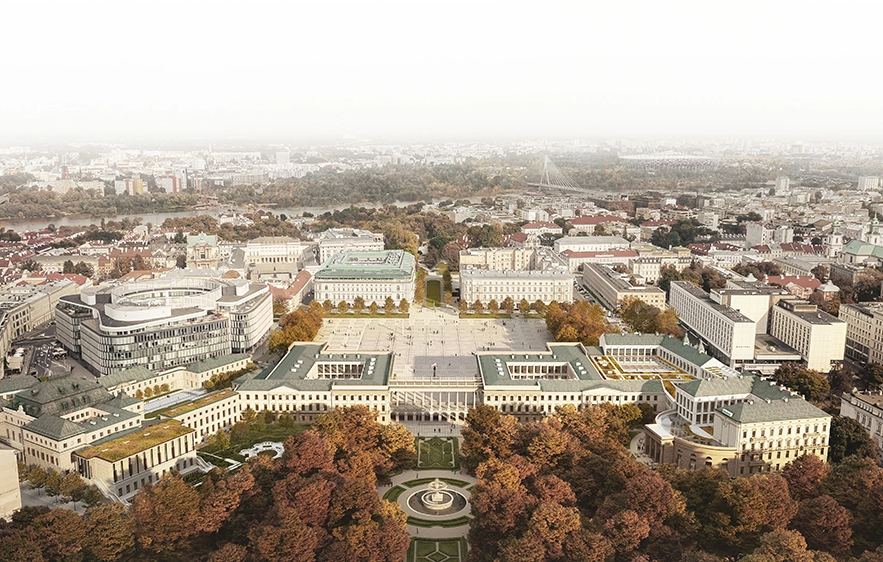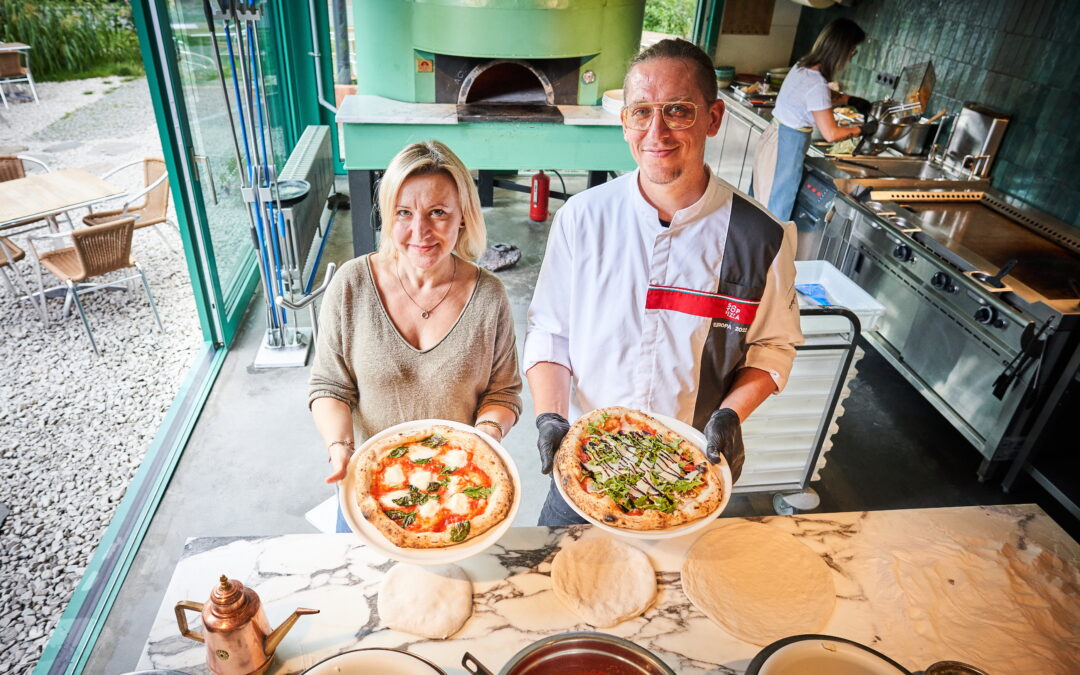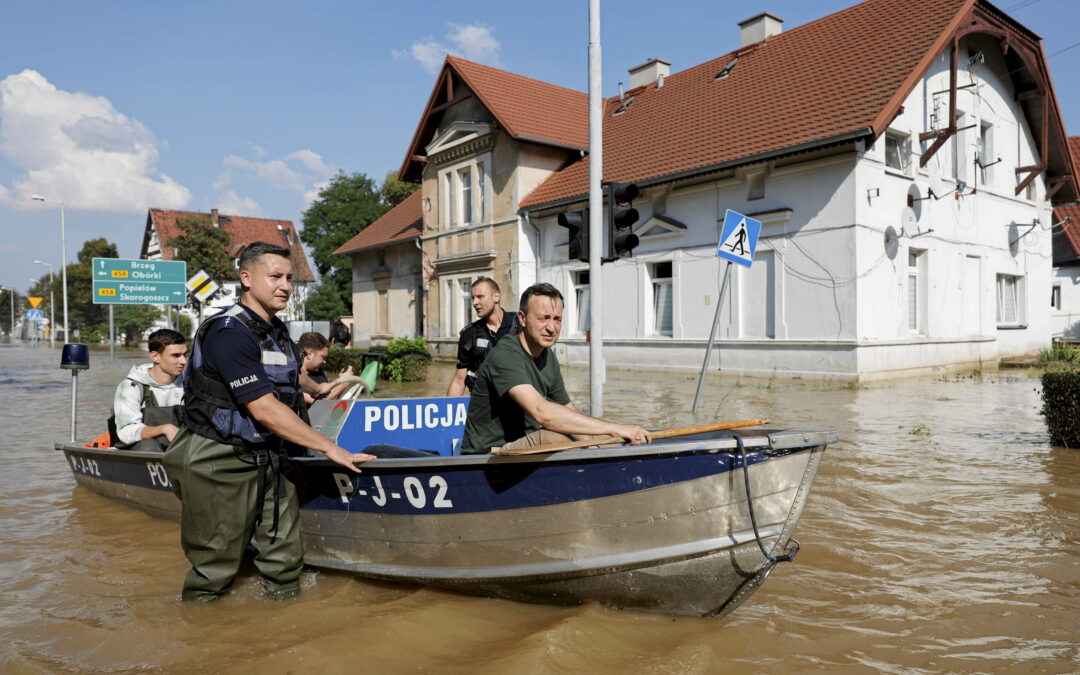By Aleksandra Janiszewska-Cardone
Józef Chełmoński is one of those artists whose name may not be instantly recognisable but whose work certainly is. His realist depictions of rural life and nature – initially disparaged by contemporary critics – have come to be seen as quintessentially Polish. A new exhibition will bring the artist, as well as his work, back to public attention.
I remember from childhood a print of Chełmoński’s Storks (pictured above), which hung in my grandparents’ lounge. Even today, I still get nostalgic when I pass this painting in the National Museum in Warsaw. The author of one book about the artist described it as “a sanctified symbol of Polishness”.
We could extend this description to cover most of Chełmoński’s oeuvre, with his canonical depictions of onrushing horses, village life and wild birds. The diversity of his work will be there for all to see at the monographic exhibition Józef Chełmoński, on show at three of Poland’s national museums – in Warsaw, Poznań and Kraków – in late 2024 and early 2025.
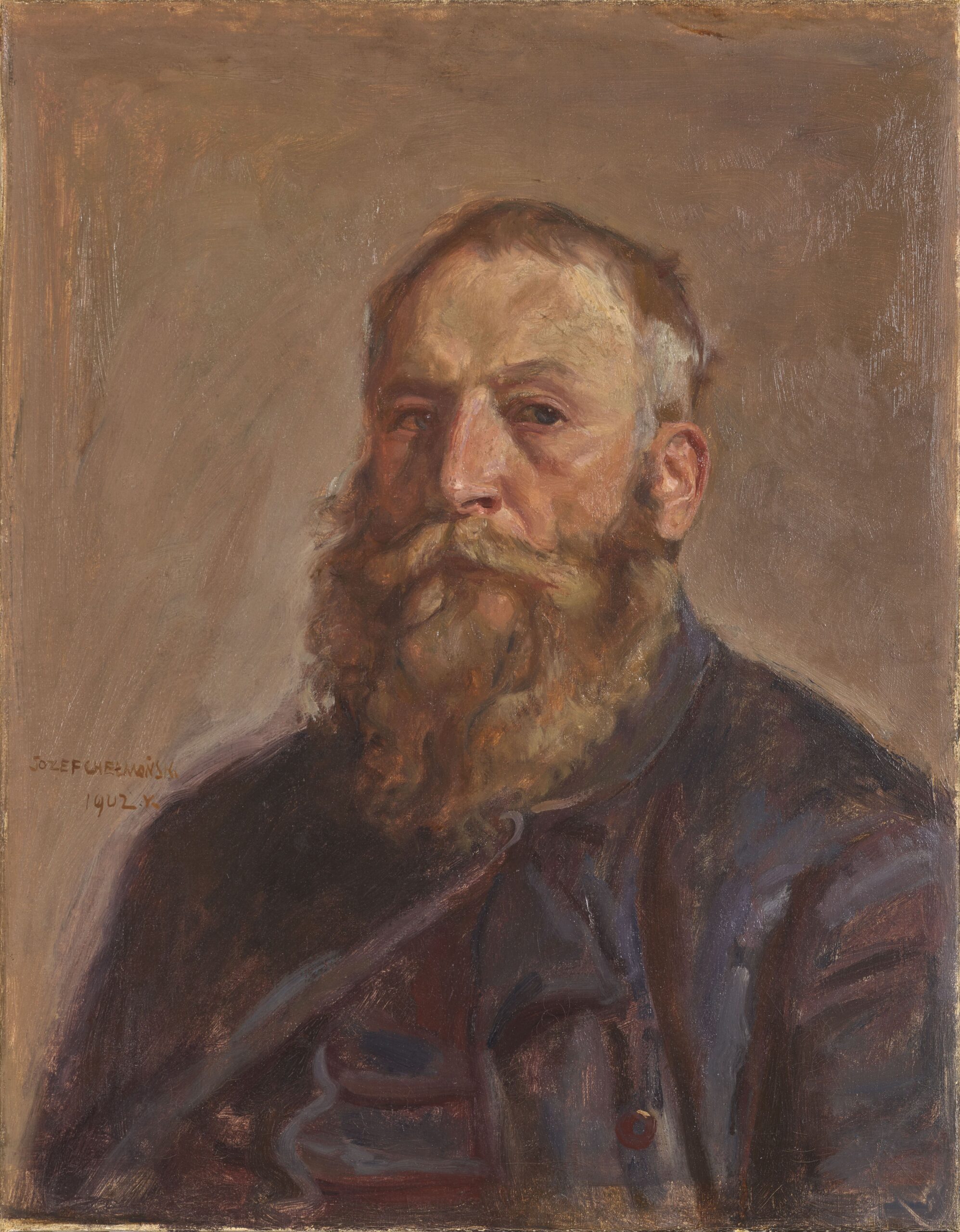
Józef Chełmoński, Self-portrait, 1902 (image credit: National Museum in Warsaw)
Born in 1849 into a landowning family in the village of Boczki, around 80 kilometres outside Warsaw, the teenager Chełmoński attended the private atelier of Wojciech Gerson, an eminent artist and teacher who placed great emphasis on creating studies from nature.
Gerson also rejected new artistic trends: both the sensitivity of impressionism and the metaphors of symbolism. Chełmoński adopted the same approach, developing an interest in Polish folklore and nature instilled by his master.
From 1872, Chełmoński continued his studies at the Academy of Fine Arts in Munich, attended by many young Polish art novices. This community produced works characterised by far-reaching realism, moody compositions and subdued colour schemes, and which often focused on portrayals of village life in Poland.
Chełmoński developed this style after his return in 1875 to Warsaw. But his paintings were not well received by Polish critics, unprepared for the realistic style, stripped of all idealisation, that the artist chose. One of them, Lucjan Siemieński, wrote the following about Indian Summer, a work produced in 1875:
“The poetic cobweb, which may arouse so many dreams in a girl, was worthy of a somewhat more ideal creature – I do not mean a sylph, but at least a mere mortal with washed feet. A bare leg is a hundred times more fertile for a painter than the prettiest slipper, but on condition that it is washed.”
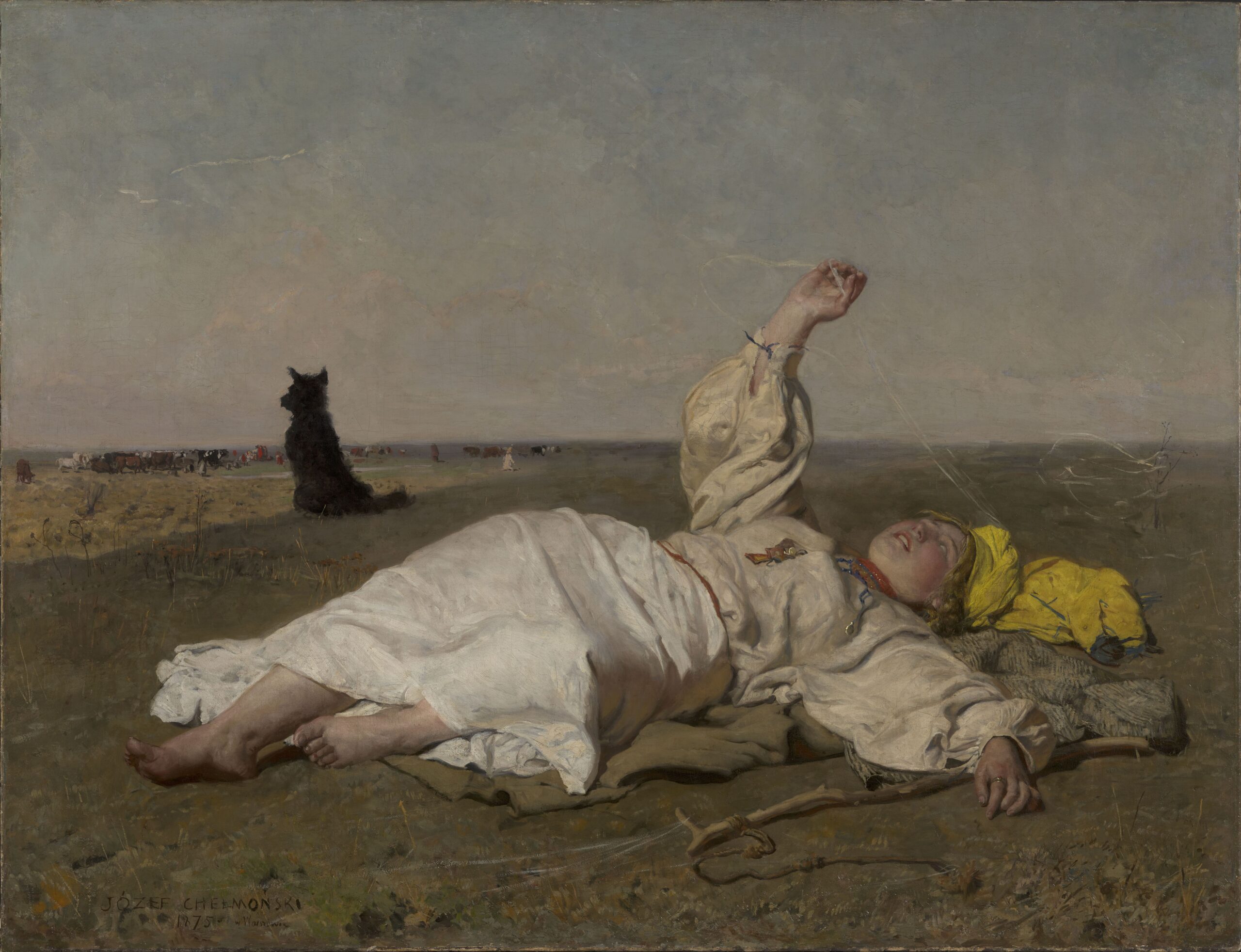
Józef Chełmoński, Indian Summer, 1875 (image credit: National Museum in Warsaw)
This harsh judgement concerns a painting portraying a young Ukrainian cowherdess resting from watching over her cattle. Her body is arranged in the foreground as she focuses all her attention on the spider’s web billowing on her fingers in the wind.
Siemieński was blind to the painting’s undoubted virtues – the picturesque expansive landscape of the Ukrainian steppe, the evocativeness of the figure of the model, and the realistic convention, an innovative change in European art at the time.
The painting, firmly rejected by contemporary audiences, waited 14 years for recognition. Its artistic merits were appreciated by Ignacy Korwin-Milewski, a wealthy landowner, who bought the work for his magnificent collection in 1894.
It was then purchased 35 years later for the collection of the National Museum, immediately becoming a calling card of the Gallery of Polish Painting. Today it is perhaps Chełmoński’s most recognised work, one of the symbols of Polishness in painting.
Sorry to interrupt your reading. The article continues below.

Notes from Poland is run by a small editorial team and published by an independent, non-profit foundation that is funded through donations from our readers. We cannot do what we do without your support.
In 1875-1887, the artist lived in Paris, where he enjoyed financial success by using easily recognised motifs that were easy on the eye, dynamic and laden with emotions.
Wojciech Głowacki, one of the curators of the exhibition at the National Museum in Warsaw, notes how Chełmoński’s art in this period focused on “depictions of horse-drawn carriages, fairs, or scenes in front of rural buildings”, as well as “his favourite theme of horses”.
As Renata Higersberger, curator of the Collection of Polish Art at the National Museum, emphasises, Chełmoński had “an incredible visual memory. He could remember the movement of a horse in a position that seemed improbable. It was only later that the invention of photography demonstrated that horses could make [such] movements”.
This talent was recognised by European and American collectors, to the artist’s financial benefit. His canvases from this time are filled with dramatic scenes: horse-drawn carriages, racing towards the viewer, frantic, absorbing, in breakneck foreshortening.
In episodes played out in rural courtyards, outside an inn and on hunting trips, the artist deftly constructed a multi-stranded narrative, emphasising the distinctive customs, costumes and types of villagers. This all seemed very exotic in the eyes of French audiences, to whom the protagonists of the paintings – the Polish peasantry, nobility and Jews – were largely unknown, making these works all the more popular.
In 1887, Chełmoński’s family moved from bustling Paris, where each passing year brought new artistic trends, to tsarist Warsaw. The return to this environment did not satisfy the artist after more than a decade of Parisian life. He was also seeking quiet and rest after years spent in the melting pot of the big city.
In 1889, they settled in the village of Kuklówka near Grodzisk Mazowiecki, where Chełmoński ran a farm and worked on his art.
“It was a return to the land of childhood mythologised in memories, an archetypal space that the artist wanted to recreate again and again,” wrote Ewa Micke-Brodniarek, curator of the exhibition, of the artist’s move to the countryside. “The ‘Parisian’ Chełmoński, when in Kuklówka, turned into a master of a quiet, subtle mood.”
Pure nature also began to play an increasingly important role in the artist’s work, as did landscape motifs painted as sketches and synthetically. He favoured penetrating observation of everyday rural life as a starting point for reflection on the condition of human existence, subordinated to the rhythms of nature.
It was in this period of Chełmoński’s return to nature that he painted Storks, mentioned and pictured at the beginning of this article. This was a time in his work when humans appeared rarely, and always anonymously, captured as an integral element of the world.
The painting was exhibited in 1901 at the Zachęta gallery in Warsaw and received enthusiastically by critics and audiences alike, who were now prepared for realistic takes on the rural theme. There was no trace of the criticism from over 30 years ago, discerning in the painter’s work only a predilection for indecently dirty feet.
Yet the move to the countryside was to the detriment of Chełmoński’s family life. His wife, Maria, found it most difficult. The couple had married in 1878 in Warsaw, from where the 17-year-old bride set off with her husband on his travels.
Leaving for Kuklówka, among the remote fields of Mazovia, changed everything. A difficult time began in the couple’s marriage – the painter was said to have been violent towards Maria, and accused her of adultery when she became pregnant. She moved to Warsaw, and divorce soon ensued.
The couple’s three daughters born in Paris – Jadwiga, Maria and Zofia – remained in Kuklówka with their father, who is said to have prevented them from meeting with their mother. He also had a poor relationship with his youngest child, Wanda, on whose upbringing he had no influence.
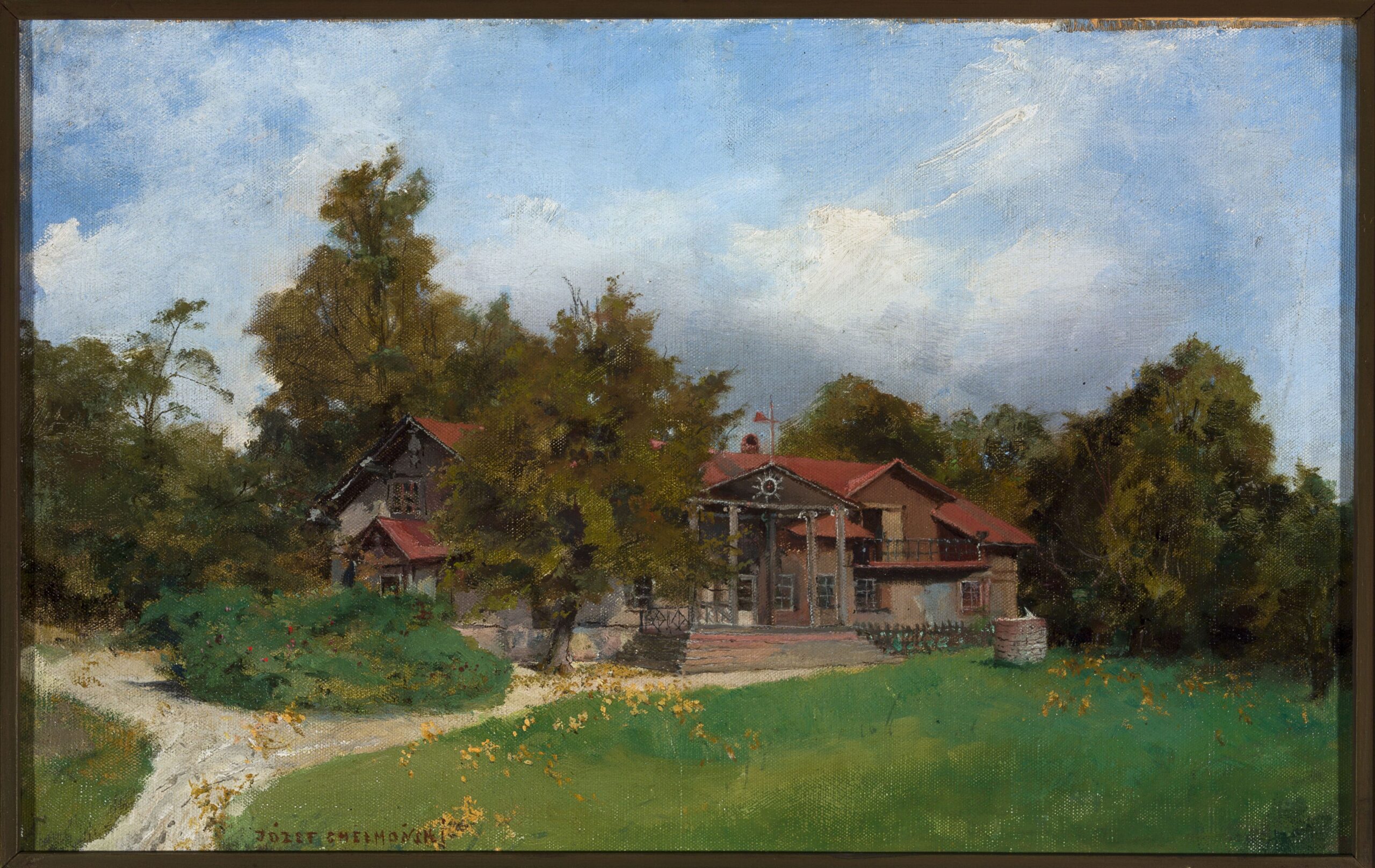

Józef Chełmoński, Villa in the garden – Kuklówka, after 1889 (image credit: National Museum in Warsaw)
As time went on, the artist increasingly distanced himself from people, avoiding social meetings, preferring to commune with nature. He lived as an ascetic, immersing himself in mysticism. At this time, a tone of spiritualism appeared in Chełmoński’s relationship with nature, which had always been very emotional.
“Like Saint Francis, Chełmoński perceived the created world as a gift given by God as a material sign of His presence,” wrote Micke-Broniarek. “Perhaps this is why in his paintings nature is very rarely a source of anxiety or fear, neither determining specific human behaviour, nor serving to illustrate the dark states of the soul.”
In the volatility and raw beauty of nature, he began to seek signs of the presence of God. In certain paintings, the artist crossed the boundaries of realism, giving expression to a pantheist view of the world.
In this second period of his art, Chełmoński drew from French inspirations. A particular interest was the Barbizon school, whose adherents painted landscapes directly based on plein-air studies, without idealisation. Following them, Chełmoński concentrated on pure landscapes with no narrative burden.
He also valued the works of the Polish landscapist Jan Stanisławski, whom he had befriended in Paris. He admired the way he had striven for realism based on plein-air painting sessions and an enormous sensitivity to the play of colours in sunlight, resembling the practices of their impressionist contemporaries.
Chełmoński’s Partridges from 1891 depicts a covey of the birds lost amid a snowy wilderness and struggling with icy blasts of wind. Some scholars view this scene as a timeless symbol of orphanhood and solitude.
As Micke-Broniarek points out, however, “the sophisticated aestheticism of the form, the considered, though seemingly haphazard composition, the graphical linearism of the figures of the birds and the subtlety of the colour palette bring to mind the masterly works of Japanese woodblocks, as critics at the time also noted”.
The move to rural Mazovia did not stop the artist from taking part in professional life. He exhibited in Poland and abroad, including in Berlin, Chicago, Vienna and Düsseldorf. He received numerous awards, such as a Grand Prix at the 1889 Paris Exposition and gold medals at the Glaspalast in Munich and the California Midwinter International Exposition, both in 1894.
“Never have such large crowds gathered before any landscape painter as before the paintings of this Polish artist,” marvelled Pia Górska, one of the painter’s students. “And no wonder! Chełmoński talks about the beauty of things that everyone ‘looks at,’ but only now they really ‘saw’ them.”
Visitors to the galleries in Warsaw, Poznań and Kraków do not have long to wait to see for themselves whether Górska’s words still ring true today.
Józef Chełmoński is open at the National Museum in Warsaw from 27 September 2024 until 26 January 2025. The exhibition will open at the national museums in Poznań and Kraków in 2025.



Notes from Poland is run by a small editorial team and published by an independent, non-profit foundation that is funded through donations from our readers. We cannot do what we do without your support.
Translated by Ben Koschalka
Main image credit: National Museum in Warsaw (under public domain)
